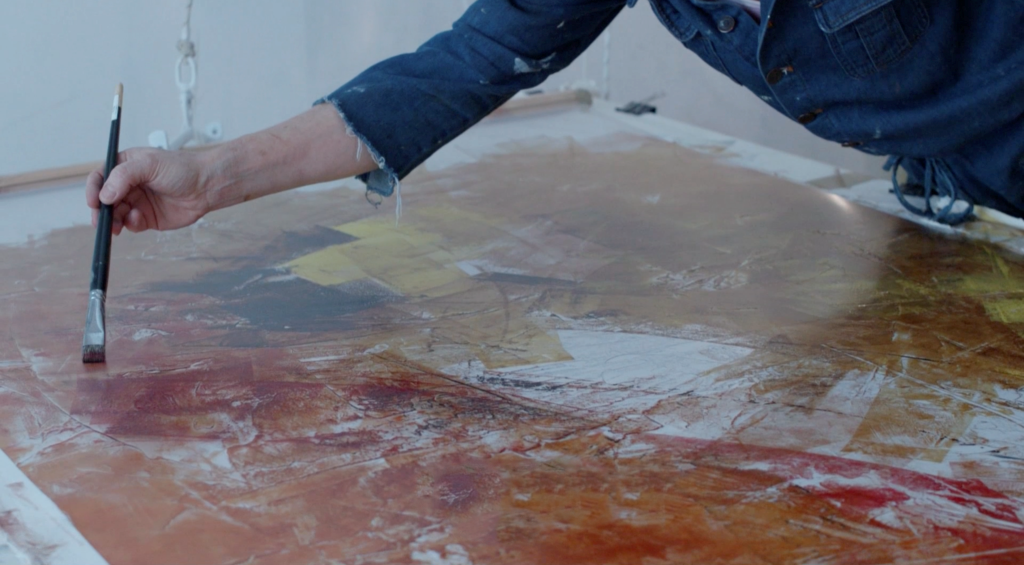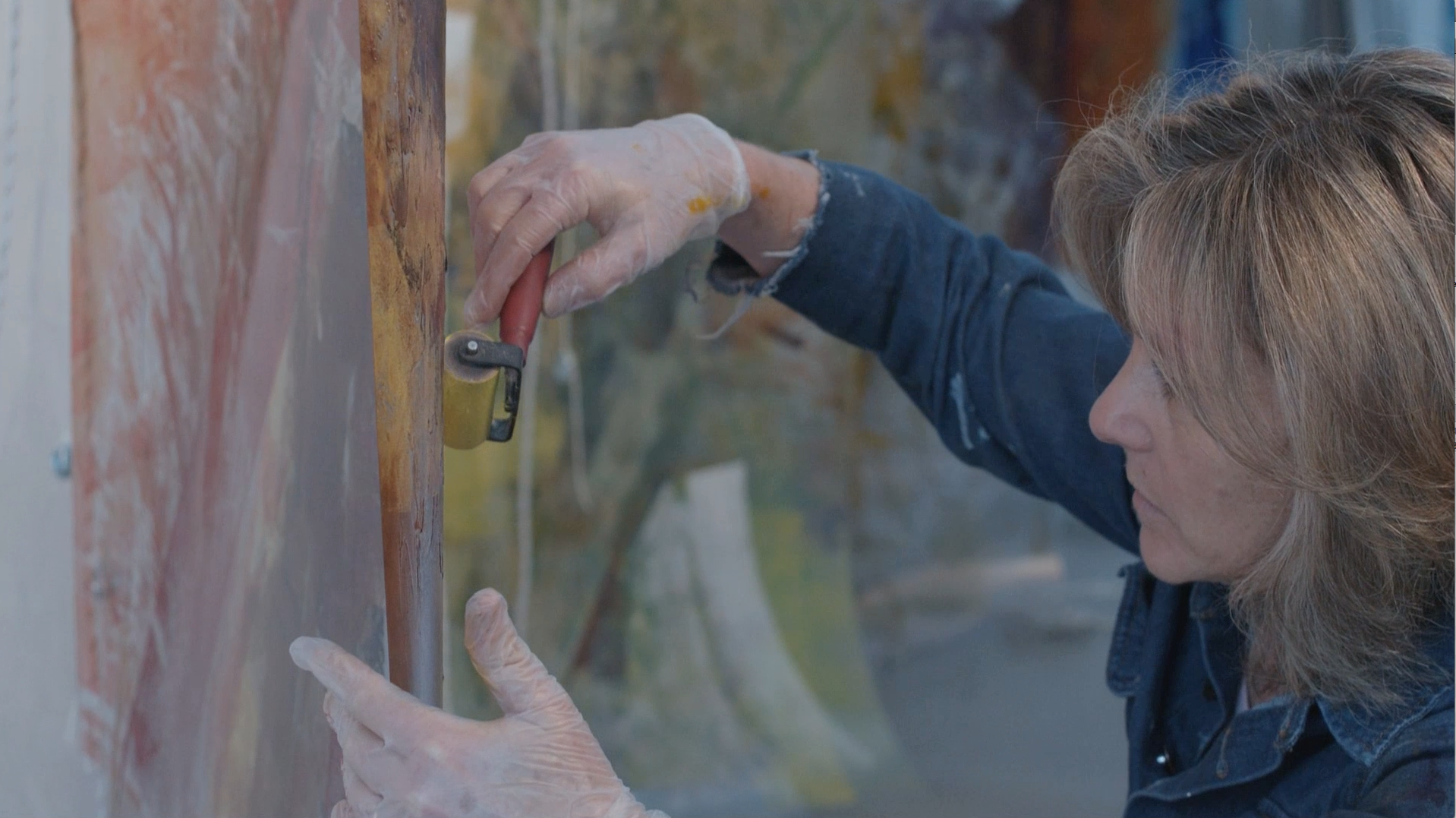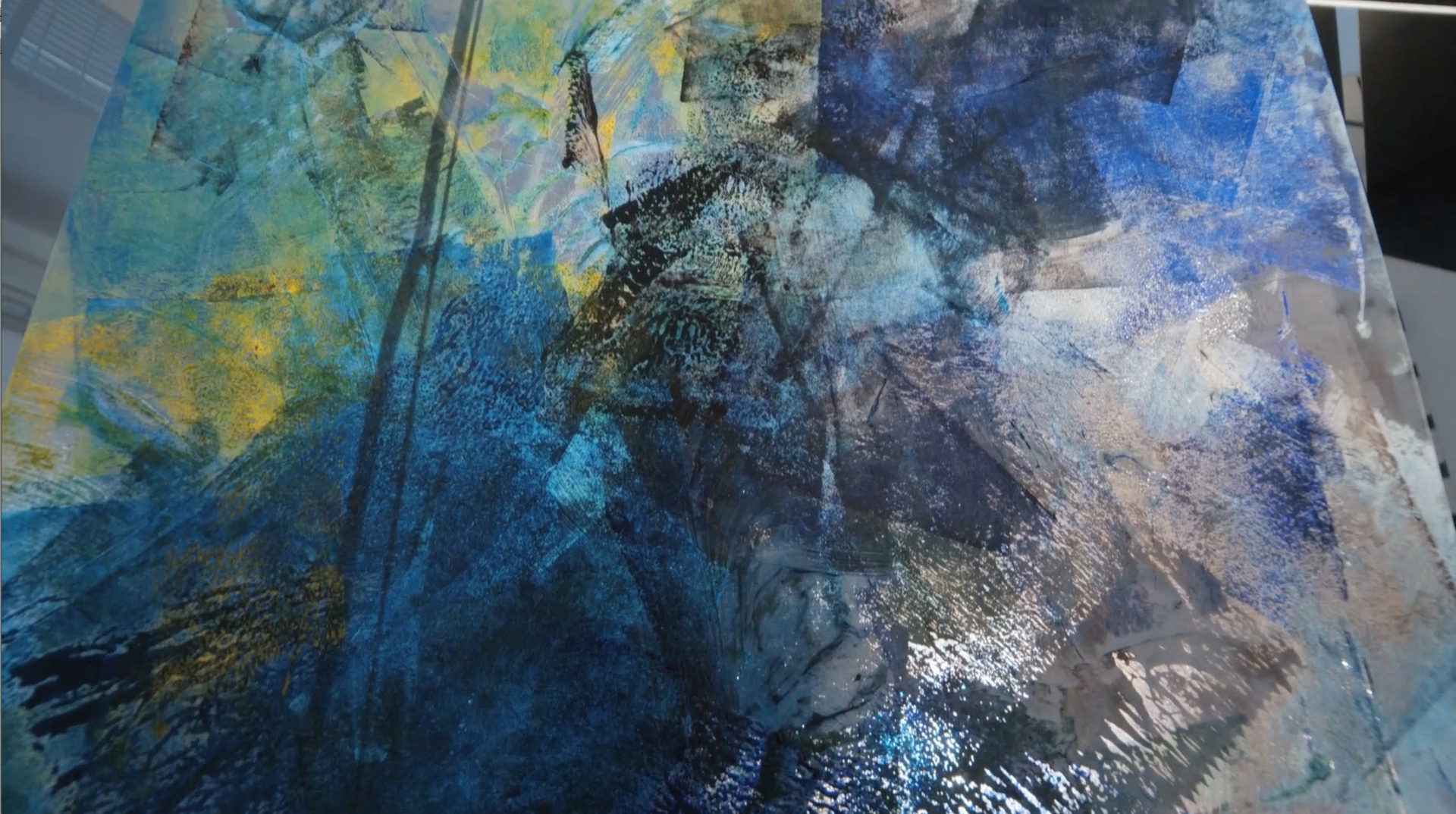Beverly Barkat was born in Johannesburg in 1966, moving to Israel with her family in 1976 where she graduated from the Bezalel Academy of Arts and Design in Jerusalem. Initially her preferred media were clay, metal, and glass but participation in a masterclass led by Israel Hershberg at the Jerusalem Studio School inspired a shift to drawing and oil painting.
Barkat’s early works were largely figurative and in keeping with traditional Western genres. Around 2009, she made a turn towards formal abstraction. Although she continued to draw from life, she started to deconstruct the figure and, at the same time, capture movement on a two-dimensional surface with dynamic lines.
In 2014, her series of paintings inspired by Japanese calligraphy earned her the Curator’s Award at the 28th International Exhibition of Art & Design in Kyoto. Since then, Barkat continued experimenting with new techniques, application methods and materials. Among the most notable were the PVC sheets which became the transparent ‘canvases’ for her first international solo exhibition,
Evocative Surfaces, staged at the Museo di Palazzo Grimani on the occasion of the 57th Venice Biennale in 2017.
In 2018 Barkat started to address national and global subjects in her art. This resulted in the exhibition After the Tribes (2018) held at the Museum Boncompagni in Rome. In this exhibition she used an experimental medium of painting complemented by a metal sculpture to explore the relationship between aesthetics and politics. In her current project, the critically acclaimed Earth Poetica, she experiments with the innovative media combination of organic and plastic materials, marking further departure from artistic conventions and addressing the urgent problem of global plastic pollution.
In parallel, Barkat continues working in her studio in media of charcoal on paper and oil on canvas. Her works have been exhibited in Taiwan, Indonesia, Israel and many others.
Barkat’s work has been placed in various private and public collections. Three of her artworks from the series Evocative Surfaces form part of the permanent collection of the Museo di Palazzo Grimani in Venice.


